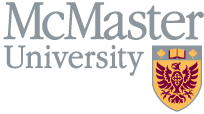
Clinician Article
Effect of median nerve neural mobilisation and cervical lateral glide on pain, disability and function in patients with nerve-related neck and arm pain: A systematic review and meta-analysis.
PMID: 40968604
-
Physical Medicine and RehabilitationRelevance - 5/7
Newsworthiness - 5/7 -
Special Interest - Pain -- PhysicianRelevance - 5/7
Newsworthiness - 5/7
Abstract
ObjectiveThis systematic review and meta-analysis aimed to evaluate the effects of cervical lateral glide and median nerve neural mobilisation compared to no treatment and other physical therapy treatments on pain, function and disability in patients with nerve-related neck and arm pain.Data sourcesElectronic searches were conducted in MEDLINE, Science Direct, Cochrane Library, PEDro and Google Scholar up to 30 June 2025.Review methodsRandomised controlled trials were included following PRISMA guidelines. Two authors independently selected relevant studies, extracted data, assessed risk of bias (RoB2 tool), and rated evidence quality. Meta-analysis was performed using random-effects models due to expected heterogeneity. The study was registered on PROSPERO (CRD42020216739).ResultsOverall, 20 studies with 953 patients met the inclusion criteria. Cervical lateral glide reduced pain compared to no treatment (3 studies, MD -2.47; 95%CI: -3.41, -1.53; P < .001) and other physical therapy techniques (2 studies, MD -1.29; 95%CI: -2.54, -0.05; P = .04). Median nerve neural mobilisation also reduced pain compared to no treatment (4 studies, MD -3.07; 95%CI: -3.78, -2.37; P < .001). Both interventions had modest effects on disability (12 studies, SMD -0.50 to -1.22), with moderate-to-high heterogeneity in analyses. The certainty of evidence was low to very low.ConclusionCervical lateral glide and median nerve neural mobilisation are clinically effective for reducing nerve-related neck and arm pain as part of multimodal management strategies. The quality of evidence remains low as the level of certainty. Targeting a population with a clear nociceptive, increased neural mechanosensitivity or neuropathic component should lead to better clinical outcomes.
Clinical Comments
Physical Medicine and Rehabilitation
Median nerve mobilisation and cervical lateral glide can alleviate nerve-related neck and arm pain and have a positive limited impact on disability. These neurodynamic techniques should be incorporated into a multimodal functional rehabilitation programme, particularly for patients with nerve mechanosensitivity or neuropathic symptoms. Better quality studies are needed to strengthen clinical recommendations.
Special Interest - Pain -- Physician
Both cervical lateral glide and median nerve mobilisation are more effective than no treatment at reducing neck and arm nerve-related pain, with median nerve mobilisation showing a slightly greater effect. While the pain reduction is clinically meaningful, the certainty of the evidence is low due to the short follow-up period (approximately four weeks), small sample sizes, and study bias. Combining neurodynamic techniques with other interventions may enhance pain relief.


